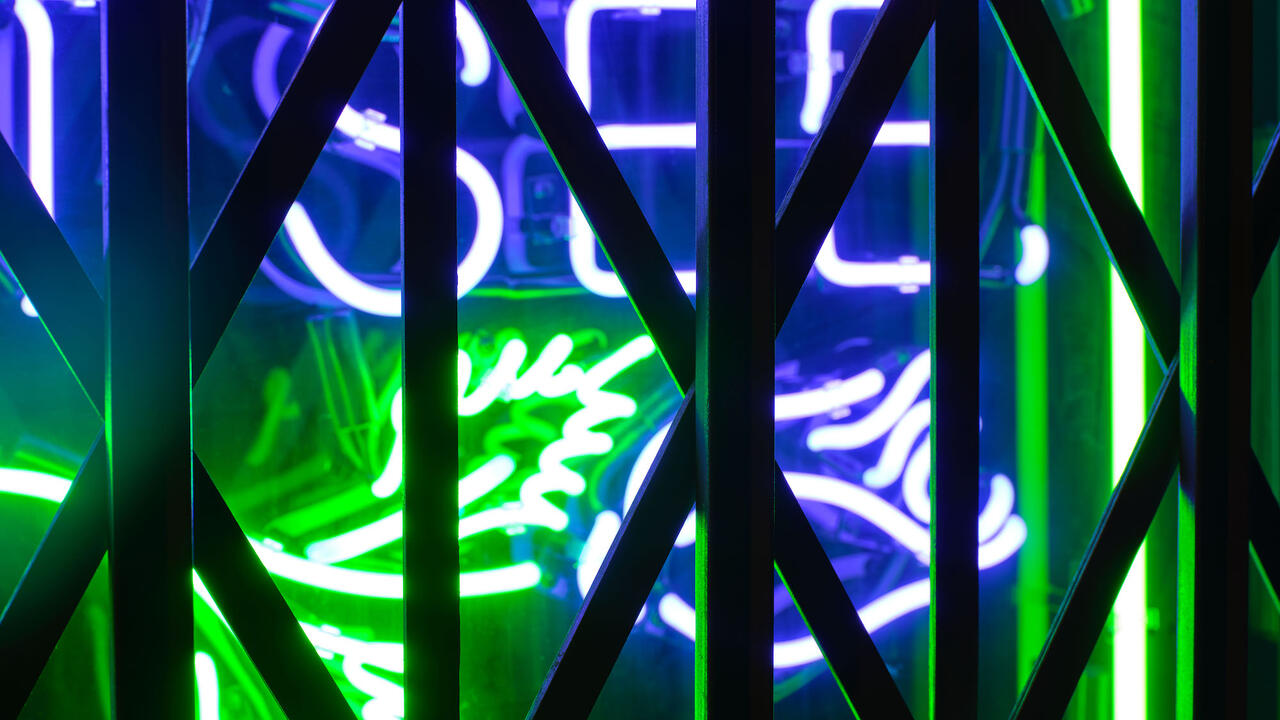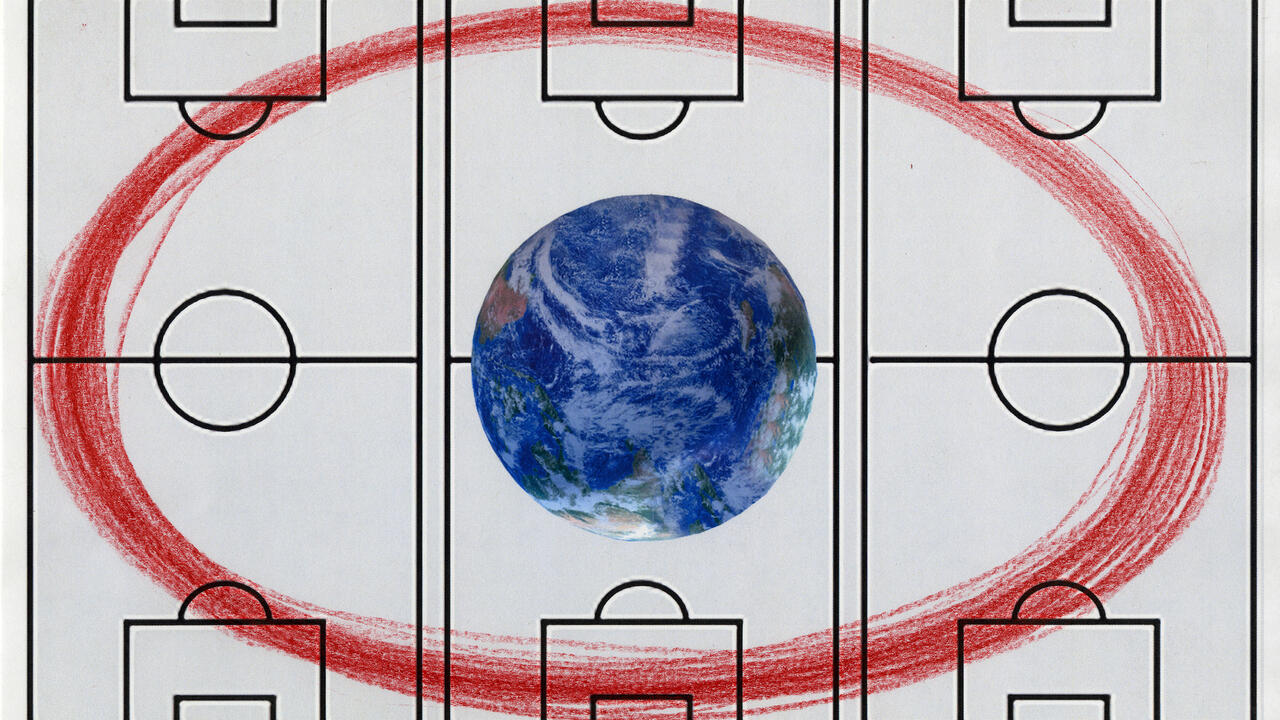Louise Lawler
Museum Ludwig, Cologne
Museum Ludwig, Cologne

The 1960s and 1970s witnessed a major shift in the conception of art – art became seenas context-bound. While that had always been the case, artists and art historians alike preferred for a long time to speak only of the auratic, monolithic ‘work’. Proud and self-contained, the ‘work’ was thought to tower over the everyday like Isengard over Middle Earth. Autonomous art, autonomous arthistory – this was the dominant conception. And it was precisely these questions that the artists of the ‘Pictures Generation’ brought to a close. Louise Lawler, whose retrospective Adjusted is currently at the Museum Ludwig in Cologne, is one of those responsible for this change.
What then, were the concerns of the Pictures Generation? In 1977, curator and critic Douglas Crimp staged the exhibition Pictures at Artists Space in New York,presenting the work of young artists using images from everyday culture and mass media. These artists isolated these images, abstracting them and, by stripping them of their usual contexts, pointed to their formative power. Lawler, who didn’t appear in Crimp’s exhibition, works toward a similar goal but takes the opposite approach. Since the late 1970s, Lawler has photographed artworks in museums, art fairs, and private apartments – always explicitly incorporating the pieces’ spatial contexts. ‘Unpacking the White Cube’ is how the American art historian Robert Storr described institutional critique, an approach that could be reduced to the following formula: you are where you are. One could also refer to art historian Markus Brüderlin, who writes that Lawler reveals art to be a ‘networked system of production, distribution, consumption, and ultimately storage.’ It’s the heteronomy of ‘works’ that interests Lawler. As brilliant as the intentions behind any work may be, showing where it’s kept – whether a bourgeois living room or a storage facility – takes the steam out of any romantic musings about artistic genius.

One example of this from the present exhibition, which comprises around 80 works, is Plato (2002), Lawler’s photograph of Cy Twombly’s 1978 drawing of the same name. The latter hangs on a wall in a Parisian apartment, a drape covering the left edge of the painting, as if the veil of illusion was put back on Plato’s head, the philosopher who – with his distinction between the realm of ideas and the world of material reality – laid the foundation for the cult of the spiritual original. It could be Elvis (1994) doesn’t show the man himself, but rather a section of Andy Warhol’s portrait of Joseph Beuys (1980) hanging on a wall. Lawler alludes to reflexive patterns of reception, insinuating that Beuys was only one star among many at the beginning of his career. This circular, sobering steeple chase continues in newer works, like tracings (2013), paintings soberly ‘traced’ in black-and-white outlines; stretches (2011–ongoing), photographs printed on elastic sheets of vinyl, stretched out to cover the walls, and thereby skewed; and the famous photographs of artworks being installed and deinstalled, like Gerhard Richter’s Ema (Akt auf einer Treppe) in Nude (2002/03).
That photo in particular points to the ‘production-aesthetic turn’ located by philosopher Anke Haarmann as the transition from art to artistic research: ‘instead of decoding the work and its epistemic value, the analysis done by artistic research concentrates on the practical genesis of the art works in question and scrutinizes the self-evidence of this production process.’ In Lawler’s work, ‘production’ doesn’t mean ‘manufacturing’, but rather, true to its etymological roots, ‘bringing forth’ – a presentation. Seen in this light, the artist seems to adhere less to the ideas of Appropriation art, as is occasionally claimed, than she does to research qua art.
Some of Lawler’s more conceptually oriented work is on display in a series of glass cases containing diverse memorabilia, including multiple-choice cards and self-made matchbooks. ‘She made no attempt to rescue art from ritual’ is written above two little checkboxes on the invitation card to Lawler’s 1995 performance at the Neue Galerie Grazof a text of the same name – one is tempted to check both ‘yes’ as well as ‘no,’ because Institutional Critique has, of course, itself become a ritual of the art system. What distinguishes Lawler from anesthetically oriented Institutional Critique however, is that she doesn’t leave her critique at an intellectual finger point. Instead, she produces art that’s of an entirely bourgeois-conservative sort – visually appealing, aestheticist, perfectionist. And that’s what becomes clear in Cologne: Lawler’s salon critique is delivered in the guise of salon art. Lawler was inspired by the critique of ‘work’ that became fashionable in the 1960s and 1970s, and she pursues it ad absurdum. Her critique of the autonomous work has itself taken on a work-like character; her scrutiny of contexts admits no additional questions. And if she wishes to remind us that aesthetic pleasure is ultimately subject to the same conditions of value production as ‘those offered by private property and ownership’, as Benjamin Buchloh writes in the exhibition’s catalogue, then Lawler does so by being complicit with that very order.
Translated by Jesse Coburn















